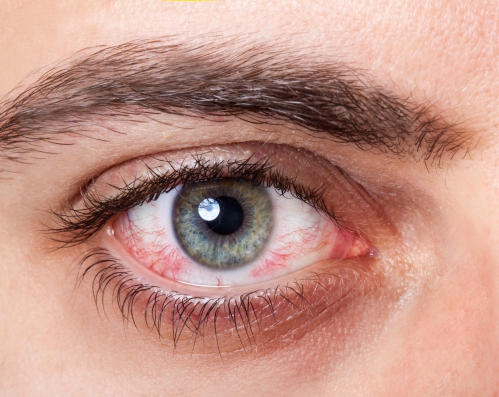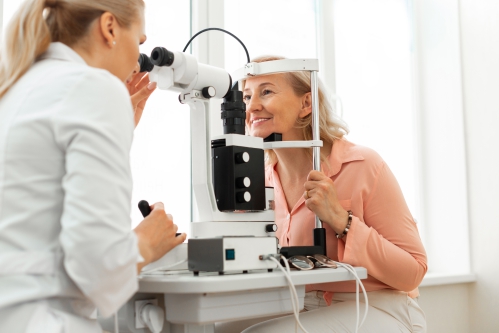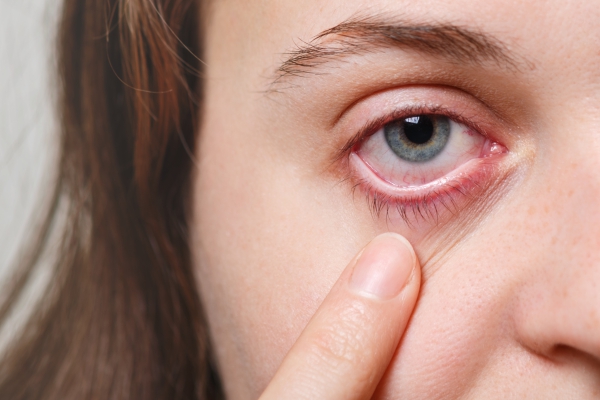What is glaucoma?
Glaucoma is a condition affecting the eyes which is when the pressure inside exceeds normal values. This increase in pressure leads to damage to the nerve found in your eyes known as the optic nerve. It is a condition that progresses slowly and can finally result in complete blindness if not treated appropriately. The normal pressure inside your eyes is usually between 10-21 mmHg. In glaucoma, the pressure is higher than 21 mmHg.
There are different types of glaucoma arising from a variety of causes. Glaucoma is the most common cause of blindness among old people. However, it is a disease that can arise at any age. Since it can lead to blindness, it is important to undergo eye tests regularly and initiate treatment early as soon as glaucoma is diagnosed.
Types of glaucoma
Your cornea and iris, which are 2 structures found in your eye, form an angle through which fluids in your eye is drained in order to maintain a normal pressure inside the eyes. Glaucoma can arise if there is a problem with the draining angle as well as through other mechanisms. There are several types of glaucoma, namely:
- Open-angle glaucoma: In this type of glaucoma, the draining angle is open or patent, however, the meshwork in the angle is blocked. This impairs the normal fluid drainage even if the angle is open. Fluid builds up in your eyes resulting in increased pressure, hence glaucoma. The pressure causes damage to your optic nerve which plays an important role in vision. Open-angle glaucoma is the most common type of glaucoma.
- Angle-closure glaucoma: As the name suggests, in this type of glaucoma, the draining angle is closed or narrowed. This impairs fluid outflow leading to a build-up and increased pressure inside your eye. This type of glaucoma can arise suddenly or gradually.
- Normal tension glaucoma: In this type of glaucoma, there is presence of optic nerve damage, however, the pressure inside your eye is normal. The exact mechanism is unknown.
- Congenital/developmental glaucoma: This is a type of glaucoma arising from birth. Glaucoma in children can also develop during the first few years of life.
- Pigmentary glaucoma: In this type of glaucoma, pigment particles from your iris deposit in your drainage angle, blocking the meshwork through which fluid flows.

Causes and risk factors of glaucoma
There are several causes of glaucoma. Anything that causes narrowing or closure of the draining angle can lead to glaucoma. Furthermore, overproduction or decreased drainage of fluid in your eyes can lead to glaucoma. The following factors can increase your risk of having glaucoma:
- Aged greater than 60 years
- Having close family members with glaucoma
- Having increased intraocular pressure
- High blood pressure
- Being extremely near-sighted or far-sighted
- Being injured to the eye
- Long term use of corticosteroid eye drops
Signs and Symptoms of Glaucoma

Initially, you may not experience any symptoms. As the disease progresses, symptoms may arise. The signs and symptoms will depend on the type of glaucoma present and the extent of damage to the optic nerve. Signs and symptoms may include the following:
- Eye pain
- Headache
- Blurry vision
- Nausea
- Vomiting
- Dark spots in your vision
- Tunnel vision especially in late stages (narrowing of vision)
- Halos which are bright circles surrounding a light source
- Loss of vision
- Red eye
If you have the above symptoms, it is important to seek medical help as soon as possible in order to prevent further damage to your eye.
Making a diagnosis
Your doctor will begin by taking a detailed history from you. It is important for you to explain carefully your symptoms and how the condition started and progressed. Your doctor will then proceed by examining your eyes. This will include performing several tests including:
- Visual field test: This involves looking for areas of vision loss. In this test, you will have to follow your doctor’s instructions and indicate when you can see your doctor’s hand. Special apparatuses can also be used for visual field test. You will have to stare at an object while there will be flashes of light. You will have to press a button each time you see the light.
- Tonometry: This is a test performed to measure the pressure inside your eyes.
- Pachymetry: This is a test done to measure the thickness of your cornea. A cornea that is thin at the centre and thick at the periphery can lead to closed angle glaucoma.
- Gonioscopy: This is a test done to have a look at the draining angle. This will enable identification of a closed or narrowed angle.
- Fundoscopy: This is an important test performed to have a look at your fundus (back of the eye), especially your optic nerve. In glaucoma, your optic disc will be damaged and appears as disc cupping. The degree of cupping correlates with the extent of the disease.

Treatment of Glaucoma
Once damage is done by glaucoma, it cannot be restored. However, even if damage has already started, it is important to initiate treatment to prevent the deterioration of the condition and blindness. The main goal of the treatment of glaucoma is to decrease the pressure inside the eye. Treatment options include:
- Prostaglandin eyedrops: These work by increasing the outflow of fluid in your eye. This alleviates the build-up of fluid in your eyes, hence decreasing intraocular pressure. These eyedrops are used once a day and include the following examples: latanoprost, bimatoprost, travoprost and tafluprost. Some side effects may include lengthening and darkening of your eyelashes, reddening of the eyes, darkening of the eyelids and iris.
- Beta blocker eyedrops: Beta blocker eyedrops help in preventing build-up of fluid by decreasing the amount of fluid produced in your eyes. Some examples include timolol and betaxolol. However, it can be associated with the following side effects: difficulty to breathe, slowing heart rate, decreased blood pressure and fatigue.
- Carbonic anhydrase inhibitors: Similar to beta blockers, carbonic anhydrase inhibitor eyedrops work by decreasing the production of fluid in your eyes, hence decreasing the intraocular pressure. These include dorzolamide and brinzolamide.
- Alpha adrenergic agonist eyedrops: These work by both lowering the production and increasing the outflow of fluid in your eye. Some examples include apraclonidine and brimonidine. Side effects that may occur include increased blood pressure, fatigue, reddening of your eyes and irregular heartbeats.
- Miotic eyedrops: These eyedrops causes your pupil to constrict. This relieves the closure of the draining angle. A common example include pilocarpine. However, it is known to be associated with the following side effects: headache, small pupils, blurry vision and near-sightedness.
- Oral carbonic anhydrase inhibitor: These are prescribed if the eyedrops are ineffective.
- Laser trabeculoplasty: In this treatment modality, a laser beam is used to open the blocked channels in the meshwork of the draining angle. This is usually done in people with open-angle glaucoma.
- Trabeculectomy: In this procedure, your doctor will create a hole in the white of your eye and remove part of the meshwork in your draining angle. This increases drainage of fluid out of your eye.
- Draining tubes: Tubes (shunts) can be inserted in your eye allowing fluid to drain out resulting in a decrease in eye pressure.


If the glaucoma occurs suddenly, this is likely to be an acute angle-closure glaucoma. This is an emergency which requires immediate treatment. This will involve a combination of medications and surgical treatment.
Complications
The most common complication of glaucoma is loss of vision or complete blindness. This is irreversible and can cause severe impairment in your daily life. This is why it is important to make the diagnosis the earlier possible to prevent permanent damage.
Prevention of glaucoma
There is no specific measures to prevent the occurrence of glaucoma. However, the following can help in preventing serious and irreversible damage:
- Get regular eye tests
- If you have close family members with glaucoma, get your eyes tested too
- Exercise regularly
- Use your prescribed anti-glaucoma medication properly
Prognosis
Loss of vision can progress rapidly in people who are not following any treatment for their glaucoma. Appropriate treatment can significantly reduce the progression of the damage. Unfortunately, a small proportion of people can develop blindness in a few years despite being on medications.
Source:
Khurana, A., 2007. Comprehensive Ophthalmology. 4th ed. New Delhi: New Age International (P) Ltd., Publishers.
Kristin, B., 2020. Primary Open-Angle Glaucoma (POAG): Practice Essentials, Background, Pathophysiology.
Chee-yung Tham, C., 2018. Primary Angle-Closure Glaucoma: Background, Pathophysiology, Epidemiology.







